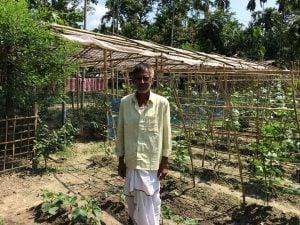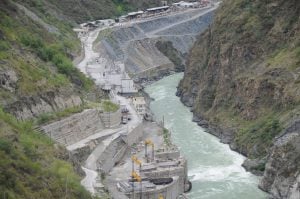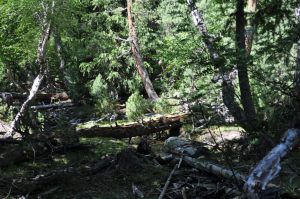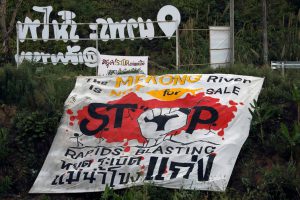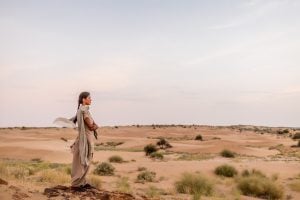For 75-year-old Tsering Angdo, today’s Ladakh is entirely different from the world of his childhood in the cold Himalayan desert. Back then, he and everyone he knew would take water supply for granted. Ladakh was never short of water, considering the limited needs of a small population. That is now changing.
Today, Angdo says, people in Leh often face water crises as it doesn’t snow in the region like it used to a few decades ago. The septuagenarian finds it hard to believe that people in Leh district now need to dig bore wells to draw water.
Climate change and booming tourism, coupled with modern practices such as people using water to flush toilets instead of traditional dry toilets, are wreaking havoc in this high-altitude desert where the average elevation is 11,000 feet (more than 3,300 metres) above sea level and temperatures swing between minus 35 degrees Celsius in winters to plus 35 in summers. Annual precipitation in the region, mostly in the form of snowfall, is less than four inches.
Earlier, according to Angdo and his fellow Ladakhis, water from the melting snow and glaciers would be enough to cater to the needs of the locals. But, with lower snowfall and warmer summers, some of the glaciers have vanished altogether, while others are melting faster than before. This is happening at a time when the region has become extremely popular with Indian tourists, thanks to some recent Bollywood movies.
“Khardong La used to be a huge glacier. Now, it is almost finished. Also, we used to receive much water in spring and early summer from snowmelt. But, we are increasingly witnessing that it doesn’t snow in most of the winters now,” Angdo told indiaclimatedialogue.net.
According to Angdo, it is good that tourists are coming in large numbers to Ladakh, boosting the local economy. “But it should not be at the cost of discomfort to the local people.” Some water and fresh air, Angdo quips, “should remain for us (Ladakhis) as well.”
Too many tourists
Earlier, Angdo recalls, only foreign tourists used to visit Ladakh. “Now, we get a lot of domestic tourists. And the number of tourists is increasing every year. There has to be a limit,” Angdo observes though he doesn’t know what the limit could be. “We have started facing severe water scarcity in Leh because this place gets flooded with tourists,” he told indiaclimatedialogue.net. “The government and the experts should determine how many tourists should come to Leh.” Angdo hopes Ladakh will not be spoiled like other tourist places in the Himalayas, such as Manali and Shimla.

Shimla, the capital of the neighbouring state of Himachal Pradesh, has faced a severe water crisis this summer, to the extent that the provincial government considered restricting the number of tourists visiting the hill station to flee the smouldering heat of the plains.
Tashi Dorje, another Ladakhi, echoes Angdo. “Tourism is helping us to generate additional income,” he told indiaclimatedialogue.net. “But we should not get carried away and let this place get flooded with tourists. It can spell a disaster for us in the future.”
Cost of tourism
One big concern shared by most people in Leh these days is that they might meet a similar fate as Shimla, if tourists keep thronging the place like never before. Shimla has been suffering from severe water crisis over the years, but this year the region suffered the worst water crisis and one of the main reasons is said to be huge tourist inflows to the city often called as the queen of hills.
The tourist footfall, especially domestic tourists, has increased tremendously in Leh in the past three years. According to the 2011 census, Leh district in Ladakh then had a population of 133,487, sparsely inhabiting the district. But, tourist arrivals have increased from the trickle that began when the Indian government first opened the region to tourism in 1974. Last year, Leh received as many as 277,255 people to this beautiful region that is an extension of the Tibetan plateau.
See: Tourists and trash at Pangong Lake
This has put pressure on groundwater because surface water, mostly dependent on snowmelt in early summer, is unreliable in the region as low or nominal snowfall is now seen in most winters.
“Tourist footfall has increased steadily in Leh and we are in an unenviable position. For every Ladakhi, there are 1.5 tourists. This could be anybody’s envy,” Nowang Rigzin Jora, well-known Ladakhi politician and former minister in the Jammu & Kashmir government, notes with satisfaction, though he promptly adds that a lot of care needs to be taken to avoid an eco-backlash.
“We should not go overboard, lest we turn ourselves into Shimla,” Jora told indiaclimatedialogue.net while referring to Shimla’s extreme water scarcity.
Tinkering with the water table
To cater to its visitors, Leh has over 450 hotels and guest houses. “The tourism sector is growing very fast, which is putting a lot of pressure on Leh’s water,” says Nordan Otzer, executive director of Leh-based environmental NGO Ladakh Ecological Development Group (LEDeG).
“This year we didn’t have much snowfall. So, the very hot topic in Leh town these days is the water scarcity. The pond just outside our office used to be full of water around this time of the year thanks to the snowmelt. But today, as you can see, it is dry,” Otzer told indiaclimatedialogue.net. “The hand pumps are also not drawing much water. This is happening for the first time here.”
According to Otzer, every household and guest house has a bore well facility for drawing water. “So, groundwater is extracted continuously. Since there are lots of flush toilets in Leh because of growing tourism, everything goes into the ground because of lack of a proper sewerage system. This results into contamination of groundwater,” says the LEDeG head.
A survey by his organisation last year had found that 90% of groundwater in Leh contained e-coli bacteria and other harmful chemicals. “Our study found that Leh’s groundwater is not fit for drinking,” he says.
In an earlier survey in 2014, LEDeG had found that 375 hotels in the town were extracting 852,000 litres of water a day, even as 60% of Leh’s 20,000 households were using bore wells to draw water.
According to Otzer, no or nominal snowfall in most years in Ladakh in the recent decade has hugely affected the stream discharge which, in turn, is making recharging of the water table difficult. Therefore, he says, LEDeG is working on a project to divert some of the surface water and allow it to travel slowly to ensure seepage of water into the ground.
This article was first published in indiaclimatedialogue.
![<p>A child drawing water from a storage tank in Ladakh’s capital Leh, where water is becoming increasingly scarce [image by: Athar Parvaiz]</p>](https://dialogue.earth/content/uploads/2018/08/Leh01.jpg)

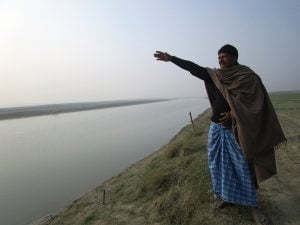

![Interview with Badi community members in Ramaghat village, Dailekh [image by: Diana Suhardiman]](https://dialogue.earth/content/uploads/2018/08/1.interview-in-Badi-300x225.jpg)
